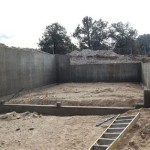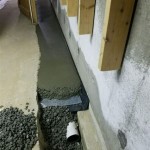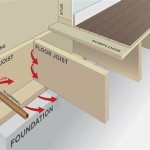Can Flooded Basement Carpet Be Saved?
A flooded basement is a homeowner's nightmare, often resulting in significant damage and costly repairs. Among the many items potentially affected, carpet is particularly vulnerable. The question of whether flooded basement carpet can be salvaged is a complex one, dependent on several factors including the type of water involved, the duration of the flood, the materials of the carpet and pad, and the speed and thoroughness of the remediation process. This article will examine these factors in detail, providing a comprehensive overview of the potential for saving flooded basement carpet.
The Type of Water Matters: Categorizing Floodwater
The type of water that caused the flooding is a crucial determinant in the decision-making process regarding carpet salvage. Water damage is typically categorized into three distinct types, each posing different health risks and requiring varying remediation strategies.
Category 1: Clean Water. This category comprises water originating from sanitary sources, such as a burst water supply line, rainwater, or a overflowing sink before it has been heavily contaminated. Clean water poses the least risk to human health. While clean water is the least hazardous, it is important to address it promptly, as it inevitably degrades into Category 2 water if left untreated for an extended period.
Category 2: Gray Water. Gray water refers to water that contains some level of contamination. Sources of gray water might include discharge from washing machines, dishwashers, or toilet bowls (excluding fecal matter). This water may contain bacteria and other microorganisms that can cause illness. Carpets exposed to gray water require professional cleaning and disinfection, and in certain instances, removal may be the safer option.
Category 3: Black Water. Black water represents the most hazardous category due to its high level of contamination. It originates from sources such as sewage backups, floodwaters containing runoff from streams and rivers, and standing water that has become heavily contaminated. Black water contains harmful bacteria, pathogens, and toxins that can cause serious illness or even death. Carpets exposed to black water are almost always considered unsalvageable and must be professionally removed and disposed of according to local regulations.
Time is of the Essence: The Impact of Duration and Speed of Response
The length of time the carpet remains submerged in water significantly affects its potential restorability. Mold and mildew thrive in damp, dark environments, and they can begin to proliferate within 24 to 48 hours of water exposure. The longer the carpet remains wet, the greater the risk of microbial growth and structural damage.
Prompt action following a flood is crucial. Immediate water extraction is paramount to minimizing damage. Commercial water extraction equipment, such as truck-mounted extractors or powerful wet vacuums, removes the majority of the standing water. The sooner the water is removed, the lower the risk of irreversible damage and mold growth.
Following water extraction, the carpet and underlying pad must be thoroughly dried. This typically involves the use of industrial-grade dehumidifiers and air movers. Dehumidifiers reduce the moisture content in the air, while air movers circulate air to facilitate evaporation from the carpet and pad. The drying process may take several days, depending on the humidity levels and the extent of the water damage. Monitoring moisture levels with moisture meters is essential to ensure complete drying and prevent hidden mold growth.
If the response is delayed and mold growth becomes prevalent, saving the carpet becomes much more challenging and may not be advisable. Mold can penetrate deep into the carpet fibers and the pad, making complete remediation difficult. In such cases, professional mold remediation services are necessary, and even then, the carpet may need to be removed.
Carpet and Pad Materials: Assessing Salvageability
The materials used in the construction of the carpet and pad play a role in determining whether the carpet can be saved. Certain materials are more resistant to water damage and microbial growth than others.
Carpet Fibers: Synthetic fibers, such as nylon, polypropylene (olefin), and polyester, are generally more water-resistant and less prone to mold growth than natural fibers like wool. Wool carpet, while luxurious, is highly absorbent and can be difficult to dry thoroughly, making it more susceptible to mold and mildew. The density and construction of the carpet fibers also play a role. Tightly woven carpets are generally more resistant to water penetration than loosely woven carpets.
Carpet Padding: The carpet pad, located beneath the carpet, is particularly vulnerable to water damage. Most carpet pads are made of foam or fiber, which are highly absorbent materials. Once saturated with water, the pad can retain moisture for extended periods, creating an ideal environment for mold growth. If the pad is heavily soaked, it is often recommended to replace it, regardless of whether the carpet can be salvaged. Even if the carpet appears to be dry, the pad can harbor hidden moisture and mold. Some newer carpet pads are designed to be more water-resistant and antimicrobial, but even these pads may require replacement after a significant flood.
Carpet Backing: The backing of the carpet is another critical component to consider. The backing provides structural support and helps to hold the carpet fibers in place. Some carpet backings are more resistant to moisture than others. If the backing is severely damaged or delaminated due to water exposure, the carpet may be unsalvageable.
When assessing the salvageability of flooded carpet, consider the material composition of each layer – the fibers, the pad, and the backing. More resilient materials increase the chances of successful restoration, while highly absorbent or damaged materials often necessitate replacement.
Beyond the factors described above, other elements impact the decision on whether flooded basement carpet can be saved. These include the value of the carpet itself. From a purely economic perspective, if a carpet is inexpensive and easily replaced, the cost of professional cleaning and remediation might exceed the cost of simply buying new carpet. Conversely, if the carpet is high-end, custom-made, or of significant sentimental value, the homeowner may be willing to invest in professional restoration efforts, even if the cost is substantial.
The presence of pre-existing conditions, such as prior water damage or mold issues, can also influence the decision. If the basement has a history of flooding or mold problems, the risk of recurring issues is higher, and replacing the carpet might be the more prudent approach. Furthermore, building codes and insurance requirements may dictate whether certain remediation methods are acceptable or whether replacement is mandatory.
Even with professional cleaning and drying, there is always a possibility that residual odors or staining will remain. Floodwater often carries dirt, debris, and contaminants that can leave behind unpleasant smells and discoloration. While professional cleaning can remove much of the surface debris, deeply embedded stains and odors may persist. In some cases, specialized treatments, such as ozone generators or antimicrobial sprays, can help to eliminate odors and prevent mold growth. However, it is important to understand that these treatments may not be completely effective, and some degree of odor or staining may remain.
Another consideration is the potential for hidden mold growth. Even if the carpet and pad appear to be dry on the surface, moisture can still be trapped within the subfloor or behind walls. This hidden moisture can create a breeding ground for mold, which can spread rapidly and cause health problems. A thorough inspection of the surrounding areas, including the subfloor, walls, and baseboards is crucial to identify any hidden mold growth. If mold is detected, professional mold remediation services may be necessary to prevent further contamination and health risks.
Homeowners must carefully weigh the risks and benefits of attempting to save flooded basement carpet. While professional cleaning and drying can sometimes restore the carpet to its pre-flood condition, there is always a chance that residual damage, odors, or mold growth will persist. Consulting with qualified professionals, such as water damage restoration specialists and mold remediation experts, is essential to make an informed decision. These professionals can assess the extent of the damage, provide expert guidance, and recommend the most appropriate course of action.
Ultimately, deciding whether to save flooded basement carpet is a complex process involving a careful evaluation of several factors. The type of water, the duration of the flood, the materials of the carpet and pad, and the speed of response all play a significant role. While professional cleaning and drying can sometimes salvage flooded carpet, it is important manage expectations, understand the potential risks, and prioritize the health and safety of the occupants.

Can You Save Carpet After A Flood Constructeam

Can You Save A Flood Damaged Carpet Or Rug

Can You Save Carpet After A Flood Constructeam

Here S What To Do With Your Carpets After A Flood

Dealing With Basement Water Damage After Flooding To Avoid Mold Mildew Just Plain Cooking

How To Dry Out Basement Carpeting Diy Family Handyman

Carpet Water Damage Mold Can The Be Saved

Should Carpets Be Replaced After Water Damage Pro Tips

How To Dry A Wet Fitted Basement Carpet With Little Effort Youtube

Water Removal Flooded Carpet Pad Damage Youtube







